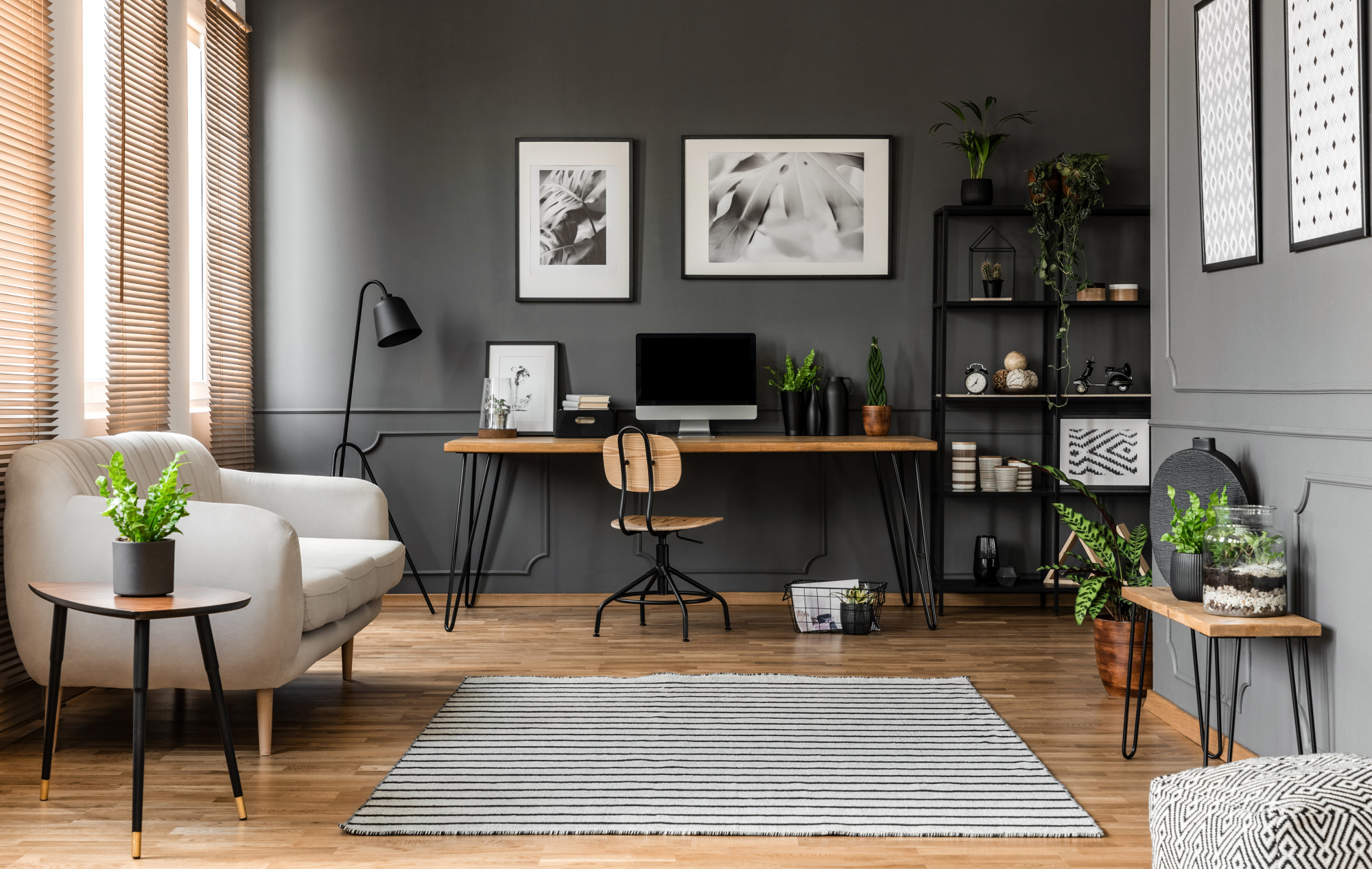
Now that you have had a spell of confinement in your home office, we bet that you have a long list of its shortcomings. The desk is not big enough, your chair is uncomfortable. Your back and neck ache after hours spent in Zoom sessions; you feel sluggish, and worry about your blood circulation.
Does any of this sound familiar? You need—yes, need—an ergonomic workspace. Your home office has to be the center of your comfort zone if you’re to remain productive and stay fit and healthy. No matter how many hours you stay there.
What Is an Ergonomic Workspace?
Physical ergonomics is the science behind designing products and workspaces that accommodate the human being using them. The biomedical engineering involved in producing ergonomic tools and spaces for comfort and ease of movement is applied to physically demanding jobs in construction and manufacturing. We’re limiting ourselves to ergonomic office spaces within the home environment.
Your ergonomic workspace has to make sure your computer and screen(s), keyboard, chair, desk, lighting, and even noise levels, are all a good fit for you.
We hope that you have a separate room for your home office that is not used for any other purpose. One vague rule is that you will need more space than you think and should always make allowances for natural movement. Don’t opt for cramped conditions.
Aside from giving yourself a desk with a generous surface area, you need to give yourself enough room to stand up in front of your desk or sit back from it. If you are sitting at your desk, make sure you can stretch out your legs. Hitting your skins every day on an inconvenient crossbar beneath the desk, for example, is not ergonomic.
Standing Is Good
Standing desks are extremely popular with freelancers who spend long hours in front of their computers. We know of translators, journalists, and writers who use a treadmill while they work at a standing desk. That way, they can get in their daily walk while walking.
Other people improve their posture when sitting down by swapping out their regular office chair for an exercise ball chair, of the kind typically used in yoga class. These methods of keeping in shape might not suit you, and we get that.
Height adjustable standing desks are best since you can work standing up or sitting down, depending on your mood and the task you’re performing.
If you like working at a standing desk for at least part of your day, you might find the gentler exercises possible when standing on a balancing board are more in tune with your need for intense concentration when working. The micro-movements you make while on a balancing board tone your muscles without you working up a sweat. Check out these balance board benefits to your health while you work.
Anecdotal evidence suggests that if you find walking on a treadmill too energetic while at your standing desk, the balance board will suit you down to the ground, quite literally.
Ease of Movement
Ease of movement is one of the tenets of an ergonomic workspace. So is making allowances for flexibility. Our ideal home office would have an ergonomically designed office chair for when you feel like sitting at your height-adjustable standing desk, and a balance ball for at least some of the time when you’re standing and working.
And you could do all that while checking out the other articles on our site!





